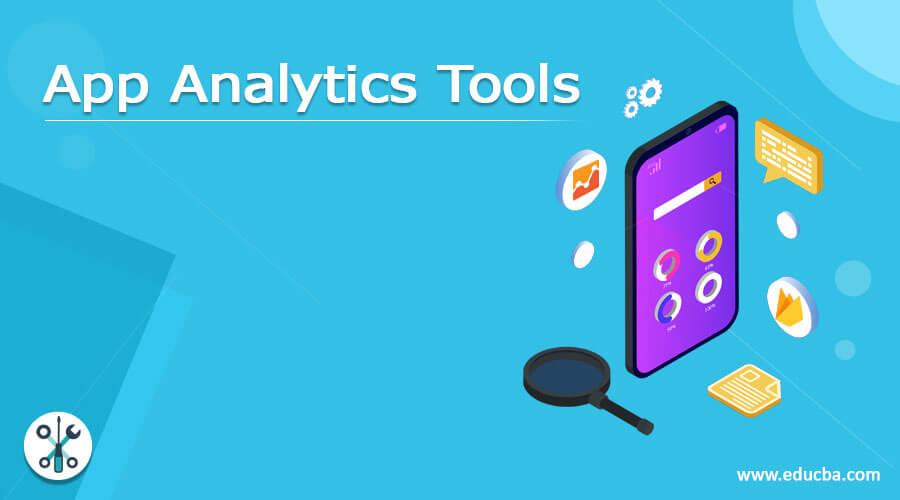
Introduction to App Analytics Tools
App Analytics is the process where the team test and analyze the data and understand how users are engaged with their application. App Analytics helps to understand user interest in the app and how well the system performs. What features are missing? In short, it gives the overall performance of the application. To perform this analysis, the team uses tools. App analytics tools analyze the app’s performance and help you understand the user’s interaction and how to optimize the app to reach the goals.
Top 11 App Analytics Tools
Here we discuss the top 11 app analytics tools:
1. Localytics
Localytics is the best app analytics tool. It is a cloud-based analytics tool that targets every customer from media, travel, business, retail, and lifestyle. Its retention feature generates an analysis that pinpoints reasons for business problems, such as low conversion rates, drop-offs, and reduced client retention. It also provides customized notifications and recommendations and personalized messaging features. Localytics understand and stop. Customer churn, app uninstall, and encourage conversation using predictive analytics. Localytics engage across various mobile app channels, including app and web push, in-app message band app inbox.
2. Google Analytics
Another best app analytics tool is google analytics which tracks and reports the application’s traffic. It follows the user’s various activities, such as session duration, bounce rate, pages per session, etc. It is integrated with Google ads. It identifies the poorly performing pages with techniques such as funnel visualization, where users come from, their geographical position, and how long they stay. Google Analytics also provides advanced features such as customer visitor segmentation.
3. Apple Analytics
Another app analytics tool is apple analytics. It tracks user engagement and app store impressions and provides user segmentation tools. It gives insight into which applications or app subscriptions are popular. Based on this data and analysis, developers can change applications to attract new and existing users. It allows users to measure the percentage of views of your application on the app store. Track various activities such as the number of installations, app users, sessions, and active devices.
4. Firebase
Google develops Firebase to create mobile and web applications. It is integrated with other Google products, such as ads And AdMob. Analysis can be done in one central location using analytics, messaging, database, and crash reporting. It allows users to sign in to the app with their Facebook, Google, Twitter, or GitHub accounts. It tracks each step of the onboarding flow to improve the experience. Firebase uses remote config to show the specific content to each defined audience.
5. Apptrove
Apptrove is a Mobile Measurement Partner(MMP) designed to help marketers drive app growth and success with robust analytics and insights. Apptrove provides multiple features, including app install measurement, in-app event tracking, campaign performance evaluation, deep linking, precise iOS attribution, audience segmentation, and advanced fraud detection and prevention. It offers insights into user engagement, retention, and lifetime value (LTV), empowering businesses to improve campaign ROI, optimize ad performance, and refine strategies effectively while maintaining a strong focus on data privacy.
6. Mixpanel
Mixpanel is one of the most popular app analytics tools. It is codeless, which means there is no need for coding knowledge to track the app analytics. It is available in two versions, a free and paid versions. Its free version comes with limited access, and paid version offers various facilities. Based on the data points, the organization can choose its plan. It helps organizations go through different ranges of data points and understand the user’s overall performance on multiple channels.
7. Buildfire
Developers use Buildfire to develop and analyze the app. It provides build fire recon features that provide powerful app analytics for users. Buildfire tracks various activities such as how many users register, use of the plugin, number of installations, bounce rate, etc. Buildfire creates a user segment based on activity. Based on user tags, it also restricts the content of the application. It allows user to integrate their data with others such as google analytics, Mixpanel, amplitude, etc. It also delivers targeted push notifications at every step of the user activity.
8. AppsFlyer
AppsFlyer is a SaaS-based app analytics tool that supports various operating systems like Windows, iPhone, and Android. AppsFlyer provides multiple features, including retention reports, cohort analyses, installation measurements, rich in-app events, bundled app measurements for iOS, TV app ad attribution, people-based attribution deep linking, bright banners, and performance metrics.
9. Smartlook
Another best app analytics tool is Smartlook. It offers to record to authenticate users. It allows users to integrate the data on various platforms, such as iOS and Slack. It provides a customizable dashboard to track and analyze information quickly.
10. AppDynamics
Another app analytics tools are AppDynamics. It is an application performance management-based tool that manages the performance and availability of the applications over cloud computing environments and inside the data center. It allows users to perform cloud migration, track activities, audit, and adopt DevOps. The availability of the applications and their operating range is also notified with AppDynamics. AppDynamics offers intelligence software and tools to improve the working of the tool.
11. App Annie
App Annie is another best app analytics tool, which allows users to track their competitors and identify the best Applications and their activities. It Manages, enriches, and identifies hidden performance opportunities across your advertising and monetization data.
Recommended Articles
This is a guide to App Analytics Tools. Here we discuss the introduction and the top 10 App Analytics Tools in detail. You may also have a look at the following articles to learn more –
